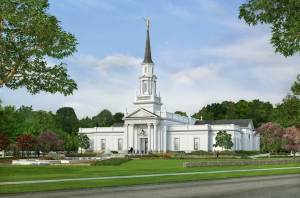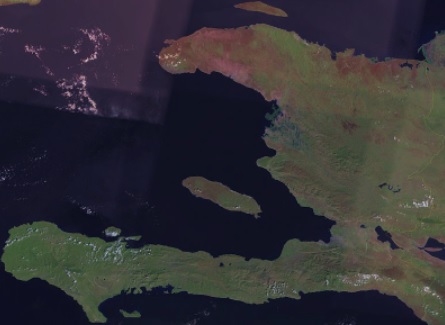By Nick Solari
In 2013, The Church of Jesus Christ of the Latter-day Saints broke ground on what will be the second Mormon temple in New England. Located on Route 4 in Farmington, the Hartford Mormon Temple will have be completed in 2016.
Lyn Greenwood, a public affairs representative for the church, has been involved in the project since 2011. In this Q&A, she offers an update on the construction of the church.

Q: They broke ground in August of 2013. Where, in terms of the construction of the physical temple itself, is The Church of Jesus Christ of the Latter-day Saints? Can you give a brief update on the project, and how they’re progressing?
LG: “They are mostly finished with the exterior. They’re finishing up this amazing granite; basically it’s one giant puzzle piece. About 9,500 intricately carved pieces go together, and that’s what they’ve been working on for some time now.
“They’re also working on the interior. They’ve been placing the floor. They are painting in some areas, I understand.
“The temples – all temples – are made with the highest materials. They’re also meant to be sustainable. They’re as environmentally up to date as they can be made. But mainly, they’re made to last for a really long time – so we get the best materials you can have. They’re planned very, very carefully.”
Q: How much fundraising needed to be done to begin the project of constructing the Mormon temple in Hartford?
LG: “Mormons give more of their income to charities than any other faith group. One of the things they donate to is charity for our religious group. We give 10 percent of our income, which is certainly a hurdle as the church continues to grow with more and more converts. But this money goes to people everywhere, all over the world. And so part of the money goes toward building chapels and meeting houses, and building temples.
“[The money] is always there. There is no specific fundraising for this temple, or for any temple construction. It’s already there, waiting to be appropriated.”
Q: Has LDS run into any obstacles, really, in terms of the construction of the temple? Have their been any unforeseen challenges?
LG: “No. I can honestly say no. I can’t think of any obstacles.
“Two winters before this one, when the temple was under construction, we had one of the worst winters. I’ve lived here for 20 or 25 years here in Connecticut, and I can’t remember a worse winter. But the snow came on days that the construction workers weren’t going to pour the foundations. They were able to pour these big, deep, thick foundations without getting hit by the bad weather. There were storms every three days, and the temperatures plummeted, but it was really amazing that it never snowed when they were pouring foundation.
“They were able to use heaters to pour the foundation in sections. It was pretty wonderful.”
Q: Throughout the process, has the town of Farmington been helpful in making this happen?
LG: “The town of Farmington has been absolutely fabulous right from the planning and zoning meetings. The Boston temple, which was dedicated in 2000, ran into a lot of obstacles. So because of that, I think it helped us in planning for this one.
“We had the Boston temple as an example, so people who have been to that location were able to tell the people of Farmington how it would be. People had concerns. ‘Would there be too much traffic? Is it going to be lit up at night? What would this do to property value?’ But the church was able to show that property value actually went up, and was able to appease people. The town has just been wonderful from beginning to end.”
Q: The estimation is that this temple will serve roughly 15,000 people. The only other Mormon temple is in Boston, so people from all over New England could be traveling here. For you, as someone who’s been involved in this project, how nice will it be when this place is finally open?
LG: “Everybody has thought about that moment. We are all so happy. When I moved here, there was no temple in Boston. The Washington, D.C., temple was the only one on the East Coast, and it’s really big. But we used to take bus trips down to that temple to worship, and it was a night and day trip. We’d do different kinds of ordinances and work there. When Boston opened in 2000 that was terrific, even though it was still about three hours from where I live, depending on the traffic. So that’s still a six-hour commute to get there.
“Now, some of the people who are most excited are the people that are older. The people in there 70s and 80s, they have to stay overnight because traveling is hard. Even mothers who have school-aged children, they would have to arrange for babysitters if they wanted to make a trip. Now, if they live close to the Wallingford location, they can just make a trip and be back in one morning.
“We wish we could have gotten this done faster, but we’re really excited about the prospect of having it all done. It is a very exciting event, to have this temple so near to us.”
Nick Solari is a senior journalism major at Quinnipiac University. He is writing about religion this spring. He can be reached at nicholas.solari@quinnipiac.edu.


 “Watching the people drive by, I used to sit in my office looking out the window and just think, ‘what a country,’” Beaucejour said. “When I came to this country, and I saw the wealth of America, I remembered what I left behind. I saw the America that was spoiled. I used to just think ‘no, this can’t be possible.’”
“Watching the people drive by, I used to sit in my office looking out the window and just think, ‘what a country,’” Beaucejour said. “When I came to this country, and I saw the wealth of America, I remembered what I left behind. I saw the America that was spoiled. I used to just think ‘no, this can’t be possible.’”